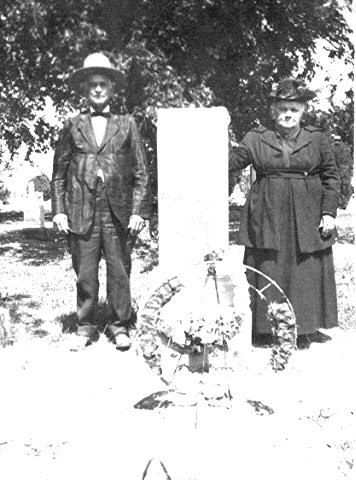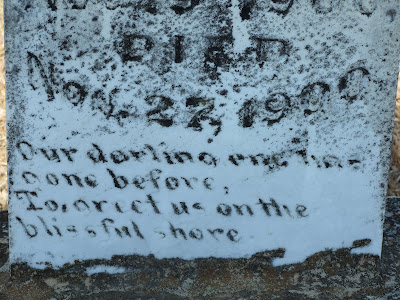Curious, I asked Pugbug whether she had seen similar imagery elsewhere. She replied, "I do not see that often in this part of Ohio. In fact, I only remember one other--and it was mixed with other symbols (flag, etc) and badly weathered."
That response explains why I got so excited last weekend when I discovered a remarkably similar carving on a gravestone in our city cemetery here in Killeen, Texas.

This World War I sailor standing at attention is a 21-year-old Gunner's Mate, Third Class from Alabama.

His name is Eddie Bishop (1898-1919), and after serving his country in World War I, he died of the measles while in South Carolina.
I recently contacted his great-great nephew Don Clark to request permission to use the wonderful personal photographs Mr. Clark shared on GM3 Bishop's memorial page, which he very kindly gave me, along with a note that Eddie Bishop was the youngest of the fourteen children born to Benjamin Henry Bishop (1850-1929) and Susan Elizabeth (Belcher) Bishop (1849-1936).
Sadly, 21-year-old Eddie was not the Bishops' first lost child, nor the last; the couple lost an infant son, Barnie Vinson Bishop (1883-1884), in 1884, and would lose another son, George Henry (1879-1925) before Mr. Bishop's passing in 1929. Mrs. Bishop lived on to see the death of her daughter Laura Alma (1878-1932) just four years before her own passing in 1936.
Benjamin Henry and Susan Elizabeth Bishop and a number of their children are also buried in Killeen City Cemetery.
The epitaph on Eddie Bishop's gravestone, though weathered and faint, lovingly refers to this 21-year-old combat veteran as "our baby."

I found myself oddly moved by that small detail- first, because it spoke poignantly of his parents' obvious affection and grief, but also because of the apparent universality of parents' endearing tendency to see us that way no matter what we might do in life or how old we might be. "Parents," I thought with a fond smile and a shake of my head that referred to both GM3 Bishop's parents and my own, and wondered whether Eddie Bishop would have shared my sentimental musings.

As a soldier's wife, I understand that not all of the hazards of service come from enemy fire. George Snyder's epitaph reminded the viewer, in very expressive first-person, that "I have laid down my life for my country's sake." So did Eddie Bishop- like many other young men of his generation and countless others before and since.
Rest in well-deserved peace.

(All photos of Eddie Bishop and his parents are borrowed from the Eddie Bishop memorial page on Find-A-Grave with the gracious permission of Don Clark)
















